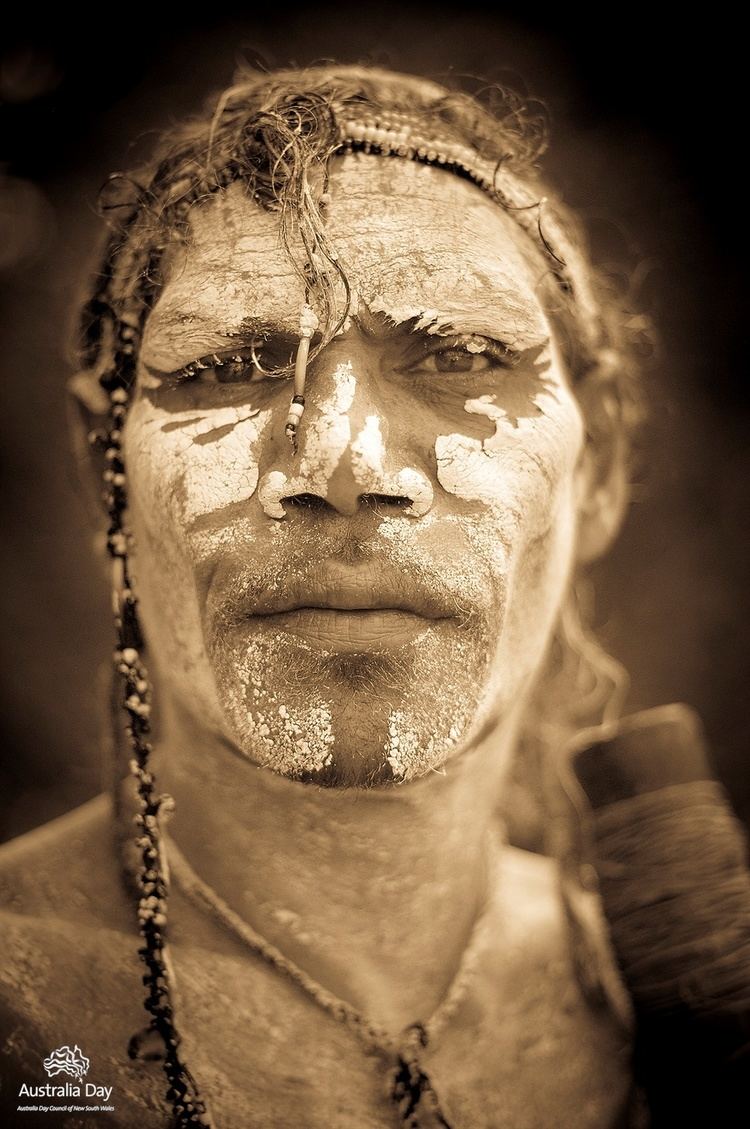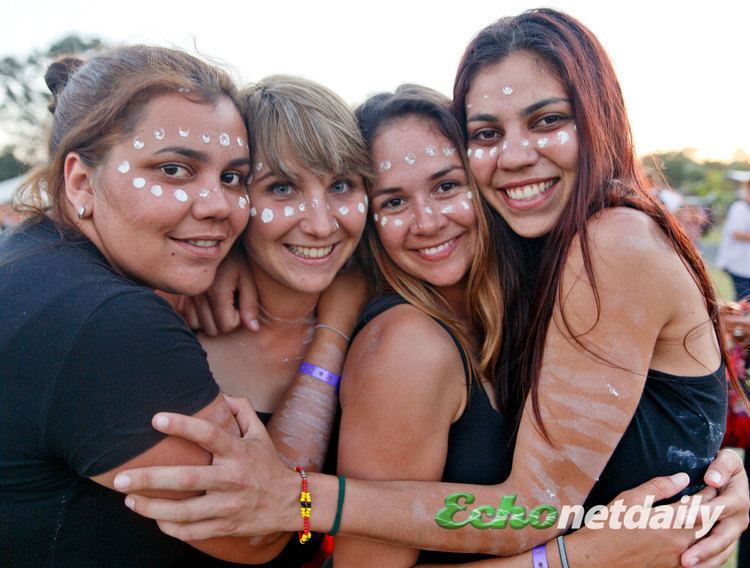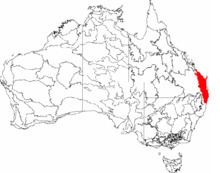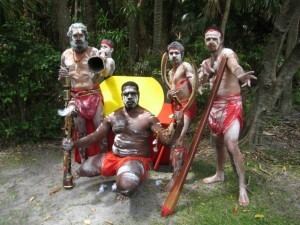Language family: Pama–Nyungan Language group: Bundjalung | Language branch: Bandjalangic | |
 | ||
Group dialects: Arakwal
Baryulgal
Dinggabal
Gidabal
Minjungbal
Nganduwal
Njangbal
Waalubal
Wiyabal(a.k.a. Widje)
Wudjeebal.
Yugumbir Location: North-eastern
New South Wales Mountains: McPherson Range
Mount Warning
(a.k.a. Wollumbin ) | ||
The Bundjalung people (a.k.a. Bunjalung, Badjalang & Bandjalang) are Aboriginal Australians who are the original custodians of northern coastal areas of New South Wales (Australia), located approximately 550 kilometres (340 mi) northeast of Sydney, an area that includes the Bundjalung National Park and Mount Warning (known to the Bundjalung people as Wollumbin ("rainmaker")).
Contents
- Learn words in the bundjalung language from northern nsw
- Country
- Religious beliefs
- Land claim
- Spiritual medicine
- Secular medicine
- Notable Bundjalung people
- References

Bundjalung people all share in common descent from ancestors who once spoke as their first, preferred language, one or more of the dialects of the Bandjalang language.

The Arakwal people are a sub-group or tribe of the Bundjalung people of Byron Bay.
Learn words in the bundjalung language from northern nsw
Country
Norman Tindale's (1974) Catalogue of Australian Aboriginal tribes identifies the identifying Baryulgal dialect (Badjalang) country as follows:

"From northern bank of Clarence River to Richmond River; at Ballina; inland to Tabulam and Baryugil, up to Bundaberg."
Religious beliefs
The Bundjalung people believe the spirits of wounded warriors are present within the mountains, their injuries having manifested themselves as scars on the mountainside, and thunderstorms in the mountains recall the sounds of those warriors' battles.

Wollumbin itself is the site at which one of the chief warriors lies, and it is said his face can still be seen in the mountain's rocks when viewed from the north.
Much of the Bundjalung peoples culture and heritage continues to be celebrated.

Nowadays people gather annually in the Bundjalung national park as a community to celebrate as a Bundjalung People's Gathering.

"We want to celebrate our Aboriginal traditions and customs. We want to share them with other people and show them our beliefs and our culture is still alive today, it hasn't been lost" - Chris Phillips, event organizer"
On these occasions traditional garments are often worn by the Bundjalung peoples, who partake in custodial dances and other performances.
Land claim
In November 2007 the Federal Court made a positive determination regarding the existence of native title within Githabul country.
Spiritual medicine
Throughout Australia, Aborigines believe that serious illness and death is caused by spirits or persons who intentionally and deliberately cause or inflict harm towards others. Even trivial ailments, or accidents such as falling from a tree, are often attributed to malevolence. Aboriginal cultural cosmology is too constraining in meaning to allow the possibility of accidental injury and death, and when someone succumbed to misfortune, a woman or man versed in magic is called in to identify the culprit.
These spiritual doctors ware men and women of great wisdom and stature with immense power. Trained from an early age by their elders and initiated into the deepest of tribal secrets, they are the supreme authorities on spiritual matters. They can visit the skies, witness events from afar, and fight with serpents. Only they can pronounce the cause of serious illness or death, and only they, by performing sacred rites, can effect a cure.
Medicine men and women usually employ plants and herbs in their rites, occasionally practising secular medicine.
Secular medicine
The healing of trivial non-spiritual complaints, using herbs and other remedies, is still practiced by most Aboriginal People, although older women were usually the experts. To ensure success, plants and magic were often prescribed side-by-side.
Plants ware prepared as remedies in a number of ways. Leafy branches are often placed over a fire while the patient squats on top and inhaled the steam. Sprigs of aromatic leaves might be crushed and inhaled, inserted into the nasal septum, or prepared into a pillow on which the patient sleeps. To make an infusion, leaves or bark are crushed and soaked in water (sometimes for a very long time), which is then drunk, or washed over the body. Ointment is prepared by mixing crushed leaves with animal fat. Other external treatment includes rubbing down the patient with crushed seed paste, fruit pulp or animal oil, or dripping milky sap or a gummy solution over them. Most plant medicines are externally applied.
Medicine plants are always common plants. Aboriginal People carried no medicine kits and have remedies that grow at hand when needed. If a preferred herb is unavailable, there is usually a local substitute. Except for ointments, which were made by mixing crushed leaves with animal fat, medicines are rarely mixed. Very occasionally two plants are used together.
Aboriginal medicines are never quantified;— there are no measured doses or specific times of treatment. Since most remedies are applied externally, there is little risk of overdosing. Some medicines are known to vary in strength with the seasons. One area of Aboriginal medicine with no obvious Western parallel was baby medicine. Newborn babies are steamed or rubbed with oils to render them stronger. Often, mothers are also steamed.
A notable feature of Aboriginal medicine is the importance placed upon oil as a healing agent, an importance that passed to European colonists, and is reflected today in the continuing popularity of Australian Blue Cypress oil (Callitris intratropica), Eucalyptus oil, Emu oil, Goanna oil, Mutton Bird oil, Snake oil and Tea tree oil (Melaleuca oil).
Earth, mud, sand, and termite dirt are also taken as medicines. In many parts of Australia, wounds are dressed with dirt or ash. Arnhem Land aboriginal people eat small balls of white clay and pieces of termite mound to cure diarrhoea and stomach upsets.
Notable Bundjalung people
Notable Bundjalung people include:
